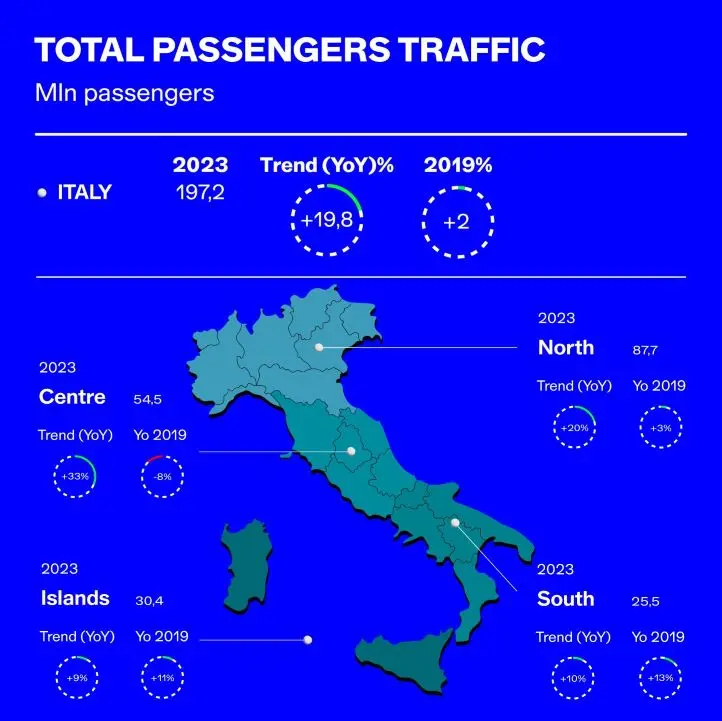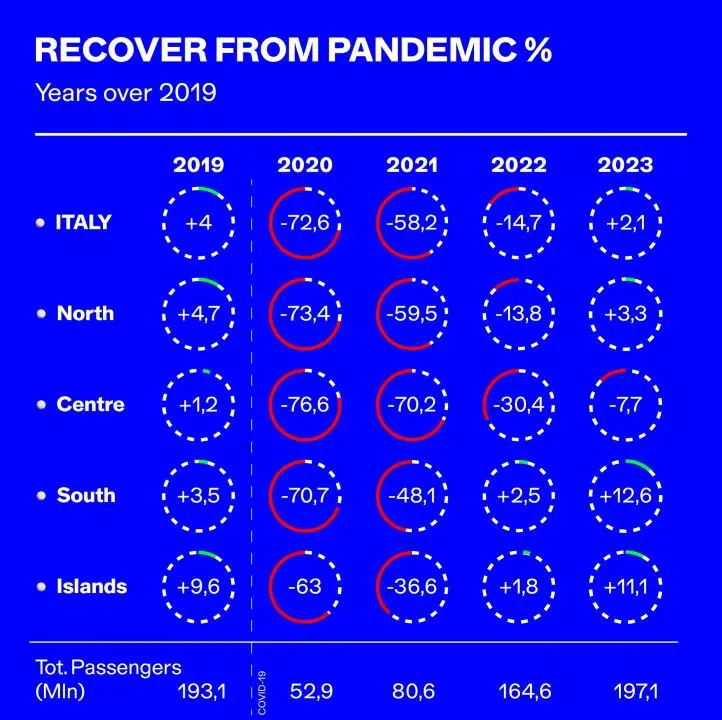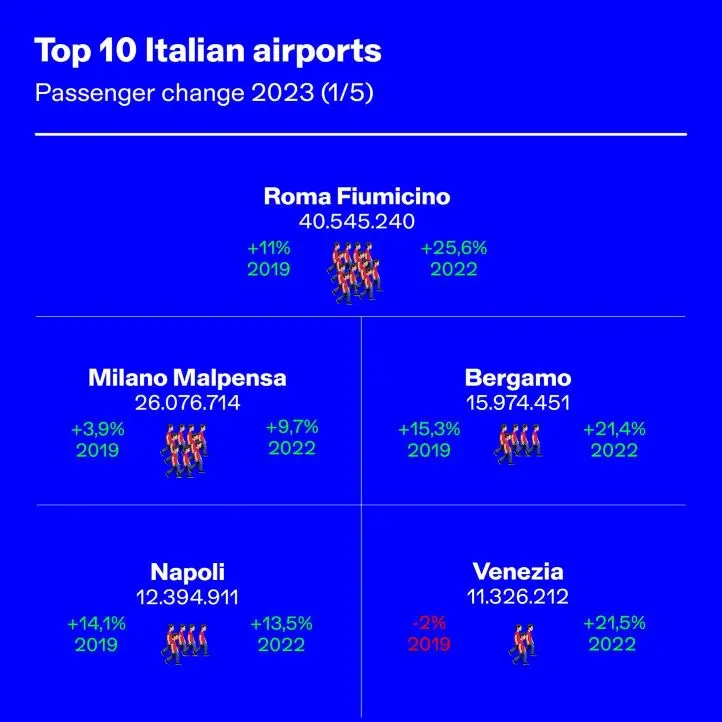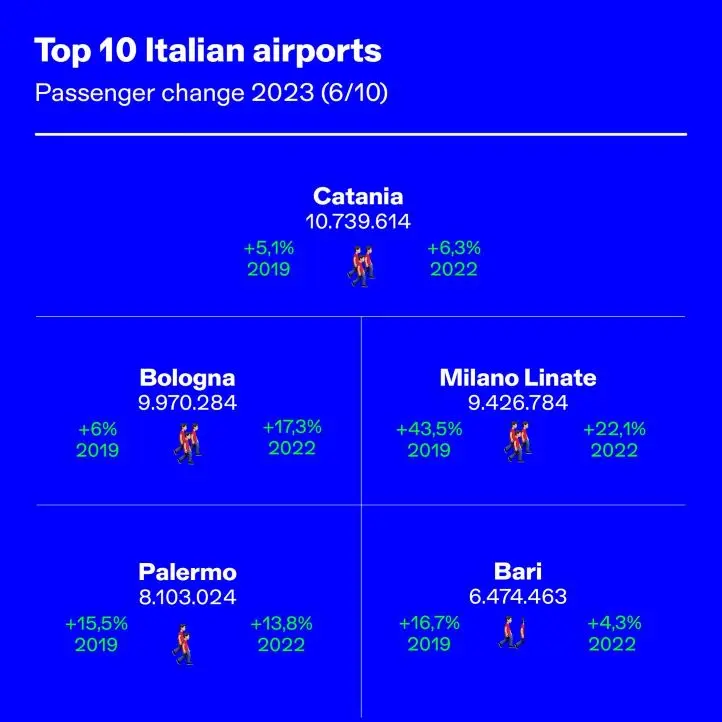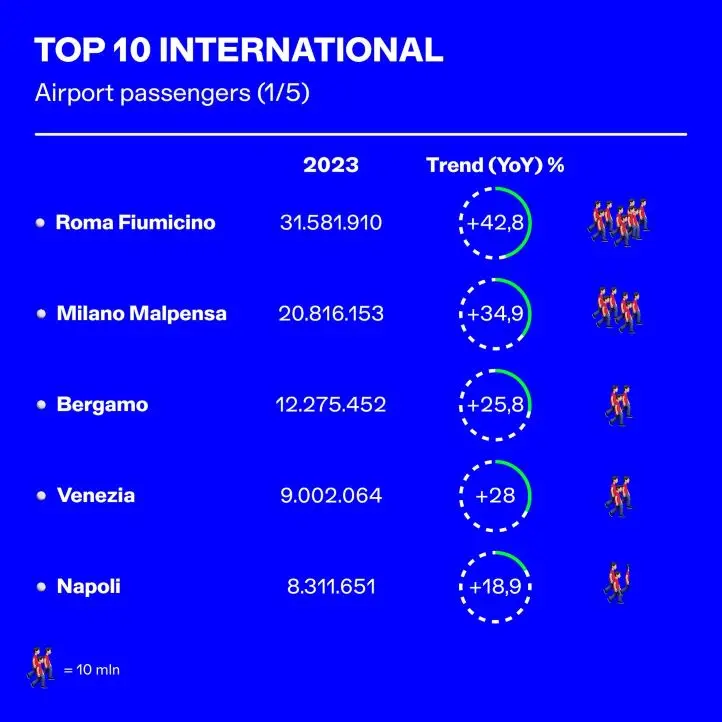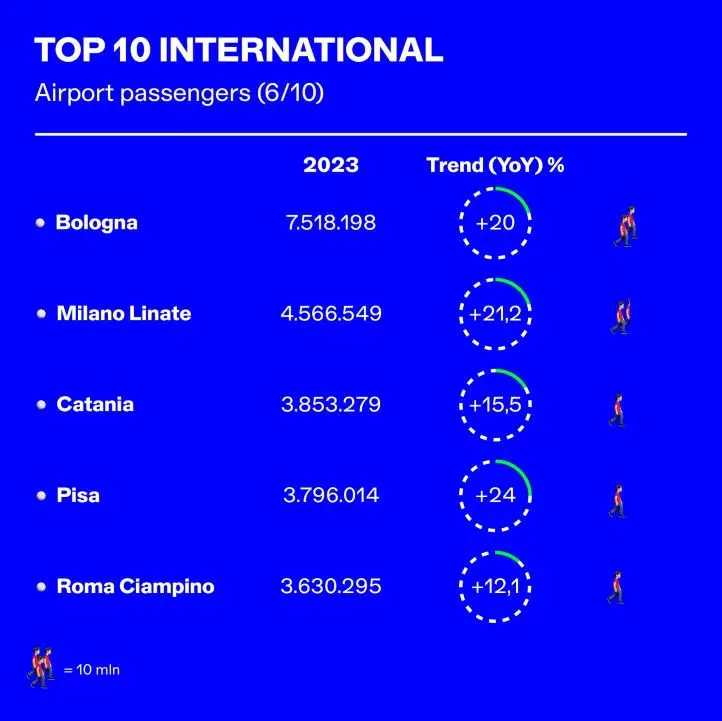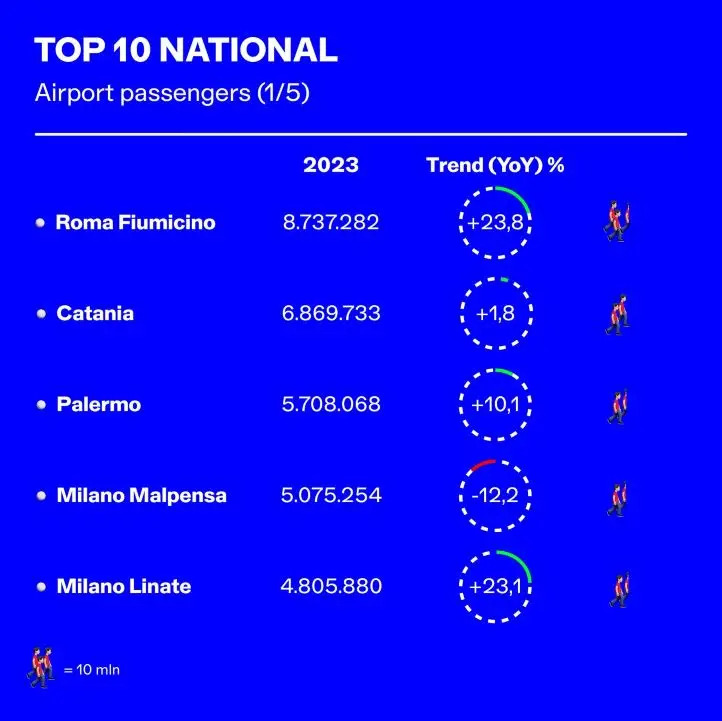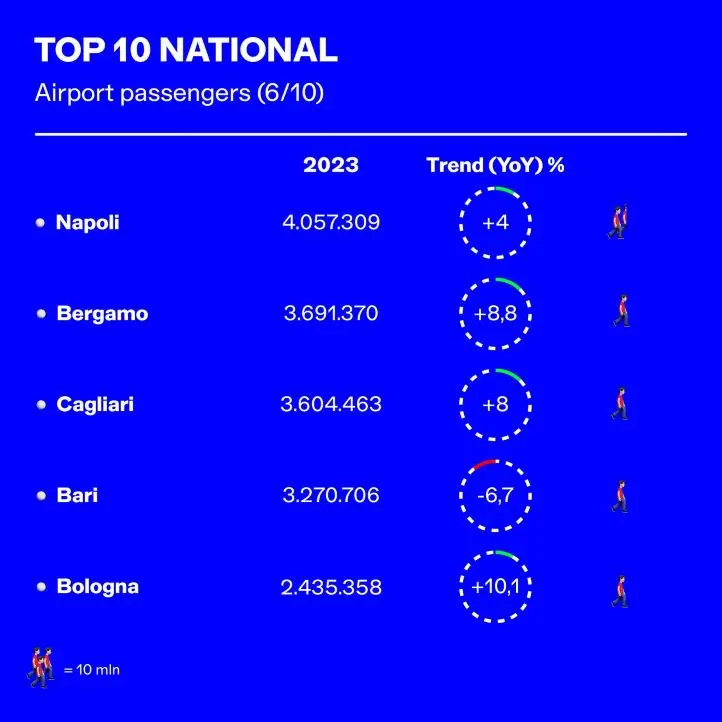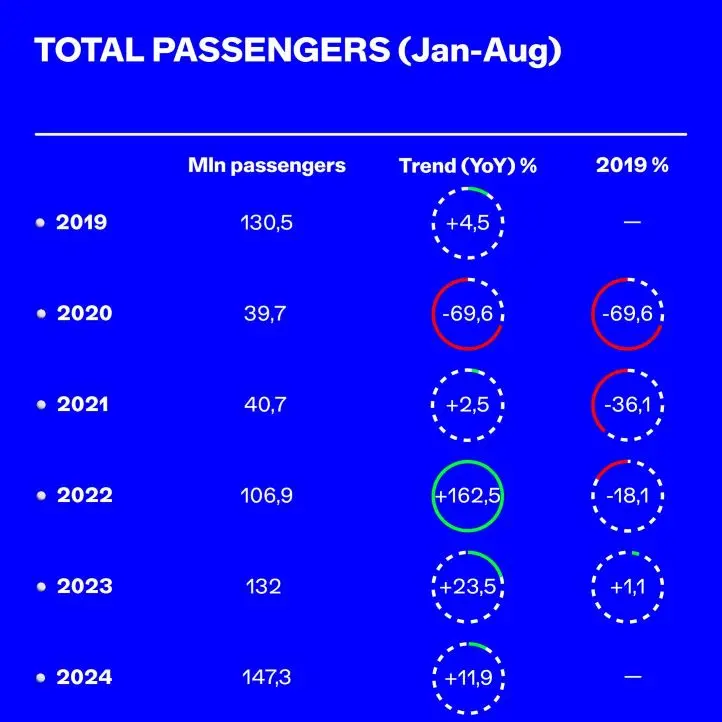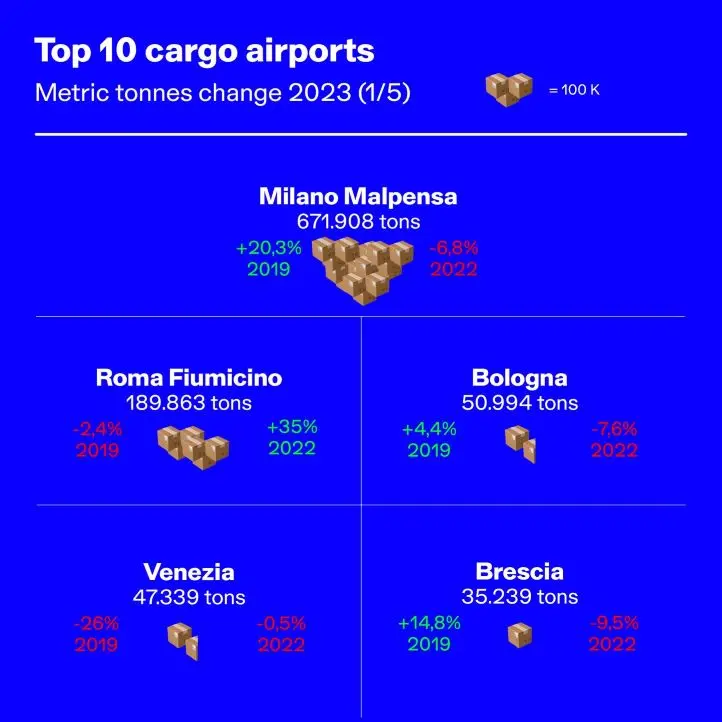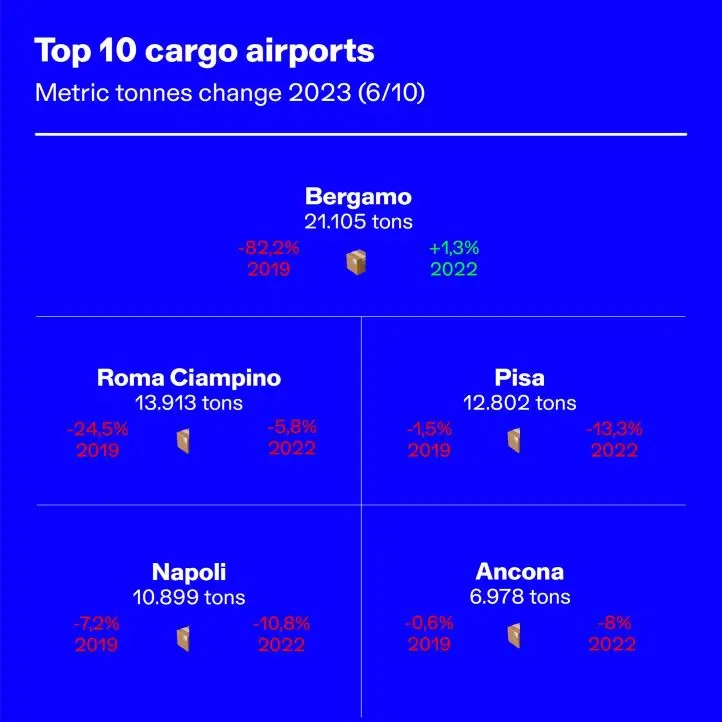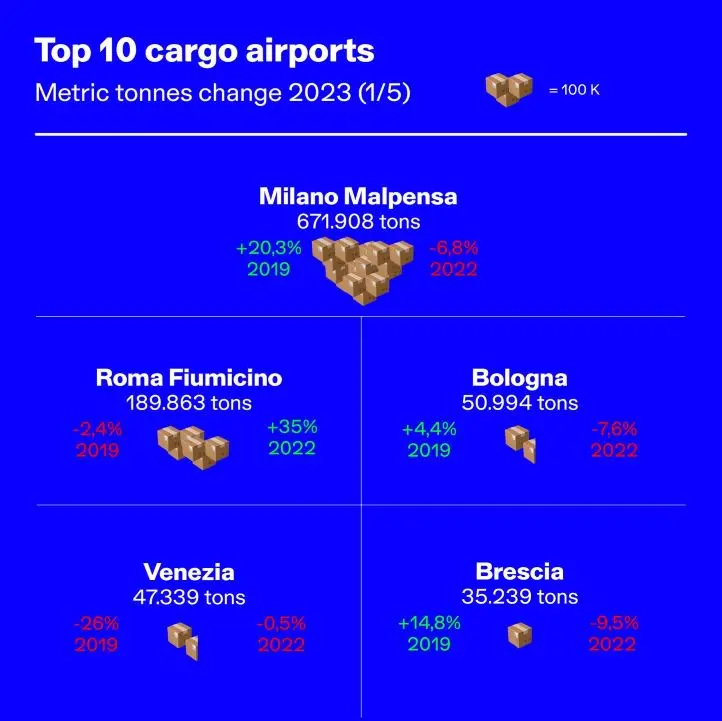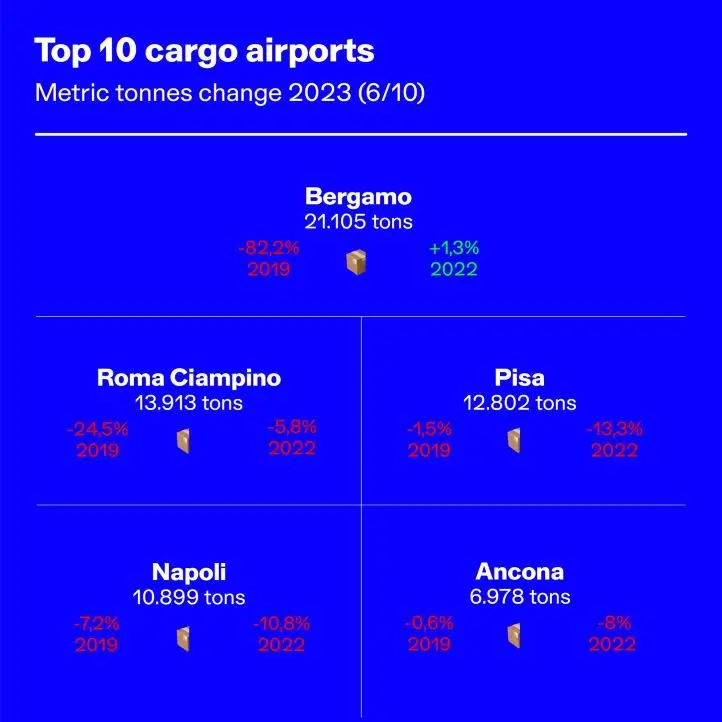After achieving a historic record in 2023, Italian airports have further enhanced their performance in the first eight months of 2024 in passenger traffic. The return to pre-pandemic annual levels now seems to be established in Italy, the first European country hit by the health crisis four years ago, moving from a minimum of 100,000 travellers in April 2020 during full lockdown to a peak of 23.5 million last August, a month that is traditionally high for air traffic in the skies over Italy.
As mentioned, the growth trend covers the entire period from January to August: there were 146.9 million passengers, marking an increase of 11.6% compared to the same period in 2023. Two-thirds into the current year, the course seems to be set for surpassing the figures of last year, which nearly reached 200 million travellers, an all-time record of 197.2 million over the 12 months, exceeding by 2.1% the 2019 figures, the last record year not yet affected by the pandemic crisis.
Traffic in detail
More passengers with fewer aircraft, despite a lower number of movements (-2.6%) compared to 2019 (1.6 million units). The aircraft have travelled with a more efficient load capacity compared to the past, promoting environmental benefits. From August 2024, movements have risen by 8.9% compared to the same time frame in 2023.
And while the post-Covid recovery phase had seen the domestic market play a central role, 2023 marks the full recovery of the international segment, the most significant part of air traffic, with 128 million passengers, 0.1% more than in 2019. This figure continues to increase in 2024 by 14.8% (year-on-year) in the first eight months (98.1 million units), along with the national figure showing a +5.6% (48.4 million).
In the same period, the volume of air cargo reached 824,670 tonnes, an increase of 17.9% compared to the previous year. However, the cargo sector is coming from a slightly downward trend in 2023, influenced by the economic and geopolitical context, with 1 million tonnes handled, -1.5% compared to 2019 and -1.6% compared to 2022. Milan Malpensa airport is the national leader for cargo traffic, handling 65% of the country's air cargo, followed by Rome Fiumicino, 18%, Venice, 4.2% and Bologna, 4%.
A record-breaking airport
The first place in passenger traffic goes to Rome Fiumicino airport, which in 2023 welcomed 40.5 million travellers, marking an increase of 25.6% compared to 2022 and 11.0% compared to 2019. The growth trend continues into 2024, already reaching 32.8 million travellers and a 24.9% year-on-year increase in the first eight months. Record-breaking days contributed to this result, such as 14 July when the capital's airport recorded a peak of 176,000 passengers transiting in a single day.
Leonardo da Vinci Airport ranks among the most important airports in the world and is the largest Italian hub for international and intercontinental traffic, with its 29 square kilometres, with approximately a hundred airlines in operation. In addition to the most popular summer destinations in the Mediterranean, the airport has recently opened new connections such as Izmir, Nuremberg, Hannover and Brest. Among non-European destinations, New York remains the top destination, while new top destinations such as Riyadh, Accra and Dakar are emerging.
Inaugurated on 15 January 1961, the Roman airport has always been able to renew itself. In terms of sustainability, it was the first airport to obtain Level 4+ 'Transition' certification, the highest level of the 'Airport Carbon Accreditation - ACA' programme promoted by ACI Europe, based on the reduction of direct and indirect CO₂ emissions in airports.
In 2024, it secured its status as Europe's best airport for the seventh consecutive year, ranking first in the hub category with more than 40 million passengers, and was once again awarded the Best Airport Award by Airport Council International (ACI) World, which independently measures passenger satisfaction at major global airports. The prize is not the only one awarded to the system managed by Aeroporti di Roma. For the first time, in fact, Ciampino's Giovan Battista Pastine has also been decreed 'Best Airport in Europe among those handling between 5 and 15 million passengers'.
New challenges
During the first six months of the year, Italy registered the highest growth rate in air traffic across Europe, surpassing France, Germany, the United Kingdom, and Spain, in terms of both route and terminal aspects. There are, however, numerous challenges looming on the European horizon whose effects reverberate across Italy's skies: from staff shortages, a legacy of the pandemic period, to extreme weather events that necessitate route changes, clogging flight corridors with increased delays due to difficulties in ground operations and cancelled flights, from cyber threats to geopolitical instability.
An ever more complex scenario that in the coming years will present a major stress test particularly for Italy, which will have to manage major globally-recognised events drawing a greater number of visitors to its main airport hubs: Rome with the forthcoming Jubilee 2025, and Milan and Venice with the Milan-Cortina Winter Olympics 2026.
